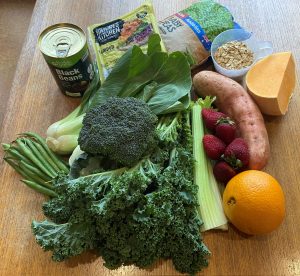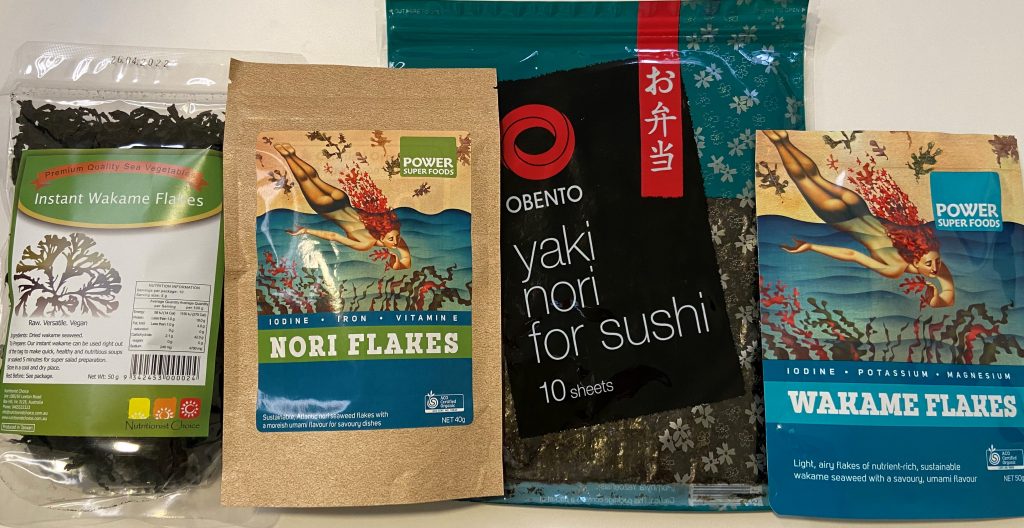You do not need to drink milk to get enough calcium. You will not make your bones stronger by drinking milk.
If you don’t believe these statements, don’t worry, you are not alone. Seventy years of marketing has convinced most health professionals that dairy foods, or a high-calcium substitute, are essential for human health. This is a rather narrow nutritional view when one considers that cow’s milk is only consumed by a minority of the world’s population, and for a relatively short period of human history. Most of the world’s population, including the majority of those of Asian or African descent, are lactose intolerant and suffer abdominal pain and diarrhoea if they drink milk.
While it is true that dairy foods are rich in calcium and that calcium is an essential nutrient for bone health, increased dairy consumption is not associated with stronger bones. In fact, a large Swedish study (Michaelsson et al 2014) found that higher milk consumption was associated with a higher rate of hip fractures (as well as a higher mortality rate). The higher prevalence of osteoporosis in countries that consume more dairy foods suggests that dairy products are not an effective preventative strategy.

You don’t need to reach for calcium fortified foods to get enough calcium on a whole foods plant-based diet
Like other minerals, calcium comes from the ground. Plants absorb it and animals in turn eat plants. Cows get their calcium from the grass. We can obtain all our calcium needs from whole plant foods, many of which have moderately high calcium levels. Some vegetables have a higher “nutrient density” for calcium than dairy foods (see Nutrient Density page). Interestingly, calcium is better absorbed from vegetables than milk, over 50% vs 32%. Many whole plant foods are rich in calcium – a cup of chopped kale, for example, provides as much absorbable calcium as a cup of milk.
Calcium content of food
Dairy (and ‘dairy alternatives’) has its own food group in the Australian Dietary Guidelines but this is no longer the case for the Canadian dietary guidelines. A liberal interpretation of ‘dairy alternatives’ might include beans, greens and other high calcium whole plant foods. A plant-based ‘milk’ with a similar calcium content to cow’s milk is not necessary. Indeed, it has been argued that a more appropriate comparator for plant ‘milks’ is human breast milk which has only a third of the calcium content of cow’s milk.
The recommended daily intake for calcium in Australia is extraordinarily high, up to 1300mg per day, a level which few people reach. It remains to be seen whether this will be revised in future guidelines given the evidence that high dietary calcium intakes are not protective against osteoporosis (Bolland et al 2015). The World Health Organization (2004) notes that calcium needs are increased by high intakes of animal protein and sodium. Dietary animal protein increases urinary loss of calcium and at very high protein intakes it can be difficult to absorb enough calcium to offset losses. WHO suggests a lower calcium requirement where animal protein intake is lower, and if sodium intakes were also lower as in developing countries then the calcium requirement would be even lower, e.g. 450mg (WHO 2004, p. 82).
A study of older Chinese men and women on a “plant-based diet” in the Journal of Bone and Mineral Research (Fang et al. 2016) suggested there was an optimal range for calcium intake, and that both very low and very high intakes were associated with higher fracture rates. It may surprise you to learn that this range of optimal intakes was 250-650mg/day for women and 275-780mg/day for men. In the discussion the authors suggest that policy makers rethink the dietary reference intakes for calcium and the policy of milk promotion in developing countries. These results provide evidence that older Chinese men and women eating a plant-based diet may require half as much calcium than their Western counterparts for fracture prevention – approximately 400mg per day. A typical whole foods plant based diet provides at least 500mg of calcium per day and more often 700-800g without having to reach for calcium fortified foods.
Calcium supplements are not effective in preventing osteoporosis and clinical trials have observed an increase in kidney stones and cardiovascular events. Australian doctors are now being urged to consider the risks and benefits before recommending calcium tablets. Osteoporosis is not caused by calcium deficiency and it is not prevented by calcium supplements. See Osteoporosis page. Getting enough calcium on a dairy-free diet of whole plant foods is a non-issue and there is no need to consume plant ‘milks’ for calcium.
See also:
- Our Osteoporosis page
- Our FAQ: Should we be concerned about salt?
Resources
- The 4 Keys to Strong Bones (Interview) – Amy Lanou, PhD
- How to Get Calcium Without Dairy – Thomas M. Campbell, MD (2014)
- Vitamin and mineral requirements in human nutrition – World Health Organization, Food and Agricultural Organization of the United Nations (2004). See chapter 4 – Calcium
- Diet, nutrition and the prevention of chronic diseases: Report of a joint WHO/FAO expert consultation, Geneva, 28 January-1 February 2002.
See 5.7 Recommendations for preventing osteoporosis: “In countries with a high fracture incidence, a minimum of 400–500 mg of calcium intake is required to prevent osteoporosis”. (p.131) - How much calcium do you really need? – Harvard Women’s Health Watch
- Calcium & Dairy Products – Dr McDougall – Dr John McDougall
- For strong bones, avoid excess calcium! – Robyn Chuter
- Does Cholesterol Matter AND Calcium Needs Are Overstated – (5 min. video, NB link starts at 6min 08s) Dr Pam Popper discusses how the 1,000-1,200mg per day target for calcium as prescribed by our dietary guidelines is not based on good science. 500-700mg per day is all we need and this is easily achieved eating WFPB.
- NutritionFacts.Org: Plant vs. Cow Calcium – Dr Michael Greger
- Calcium and Strong Bones – Physicians Committee for Responsible Medicine
- Calcium in the Vegan Diet by Reed Mangels, PhD, RD. From Simply Vegan 5th Edition updated August, 2018
Peer-reviewed articles:
- Bolland, M. J., Leung, W., Tai, V., Bastin, S., Gamble, G. D., Grey, A., & Reid, I. R. (2015). Calcium intake and risk of fracture: Systematic review. BMJ, 351, h4580.
- Ding, M., Li, J., Qi, L., Ellervik, C., Zhang, X., Manson, J. E., . . . Hu, F. B. (2019). Associations of dairy intake with risk of mortality in women and men: three prospective cohort studies. BMJ, 367, l6204.
- Fang, A., Li, K., Guo, M., He, J., Li, H., Shen, X., & Song, J. (2016). Long-Term Low Intake of Dietary Calcium and Fracture Risk in Older Adults With Plant-Based Diet: A Longitudinal Study From the China Health and Nutrition Survey. Journal of Bone and Mineral Research, 31(11), 2016-2023.
- Hunt, C. D., & Johnson, L. K. (2007). Calcium requirements: new estimations for men and women by cross-sectional statistical analyses of calcium balance data from metabolic studies. American Journal of Clinical Nutrition, 86(4), 1054-1063.
- Michaelsson, K., Wolk, A., Langenskiold, S., Basu, S., Warensjo Lemming, E., Melhus, H., & Byberg, L. (2014). Milk intake and risk of mortality and fractures in women and men: Cohort studies. BMJ, 349, g6015.
- Reid, I. R., Bristow, S. M., & Bolland, M. J. (2015). Calcium supplements: benefits and risks. Journal of Internal Medicine, 278(4), 354-368.
- Tai, V., Leung, W., Grey, A., Reid, I. R., & Bolland, M. J. (2015). Calcium intake and bone mineral density: systematic review and meta-analysis. BMJ, 351, h4183.
- Zhao, J. G., Zeng, X. T., Wang, J., & Liu, L. (2017). Association between calcium or vitamin D supplementation and fracture incidence in community-dwelling older adults: A systematic review and meta-analysis. JAMA, 318(24), 2466-2482.
Page substantially revised 9 December 2019
Page last updated 30 December 2019
Resources updated 8 March 2024

